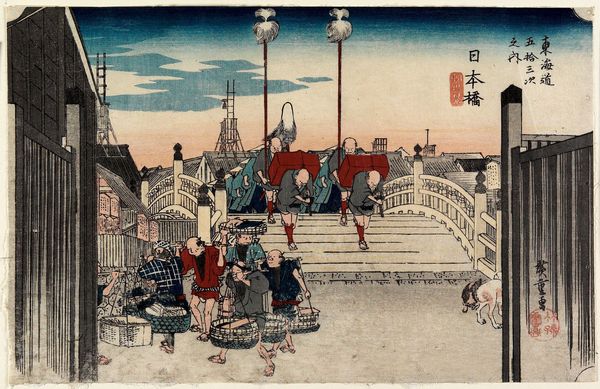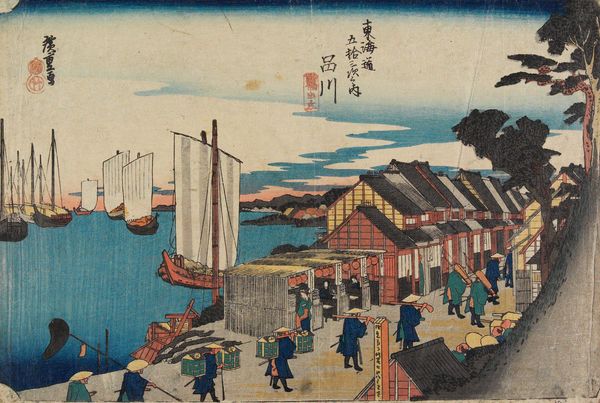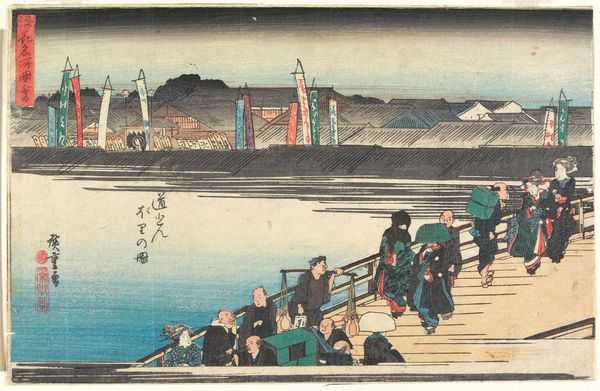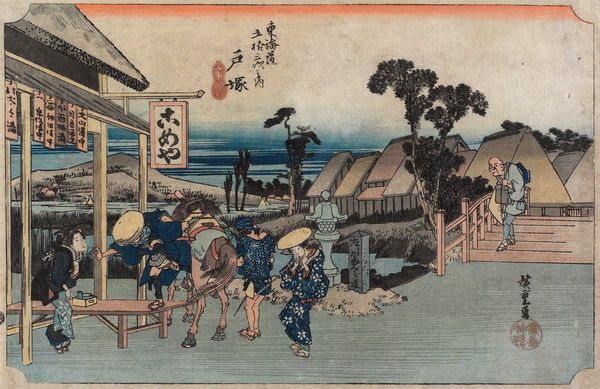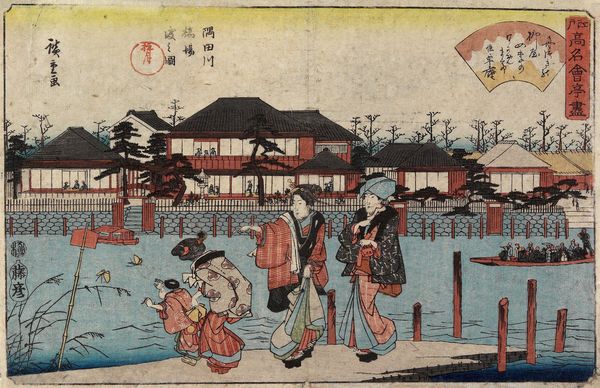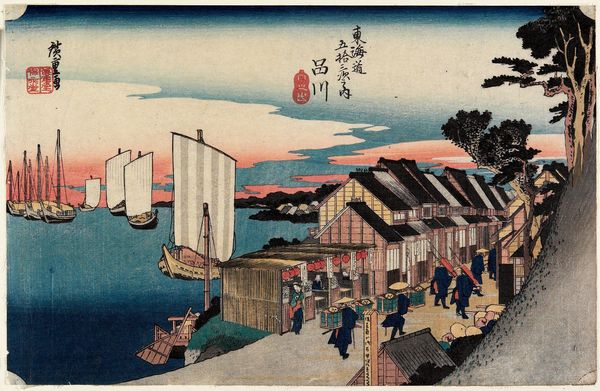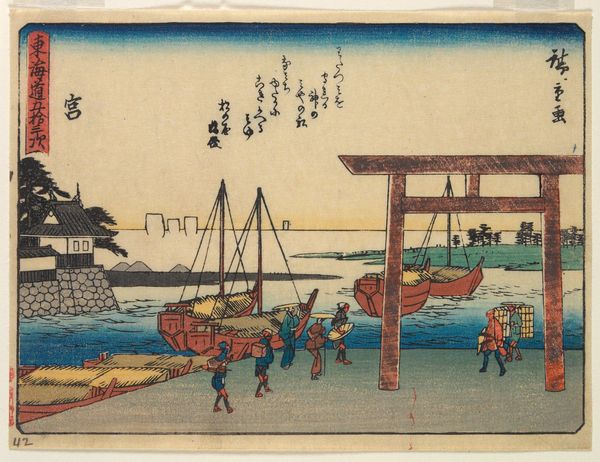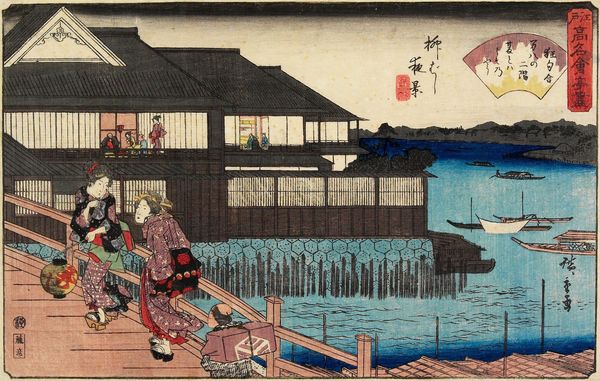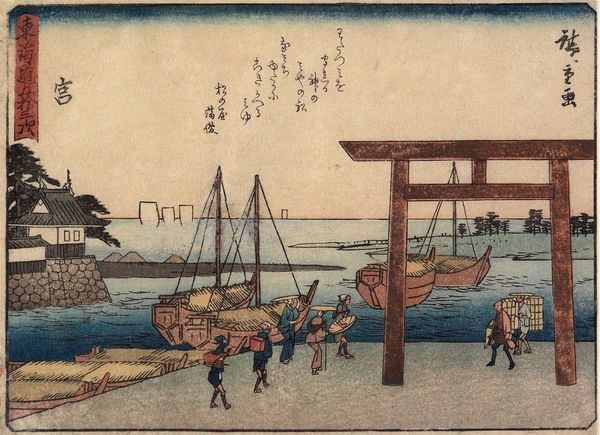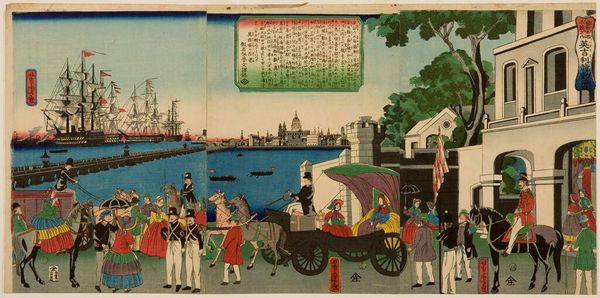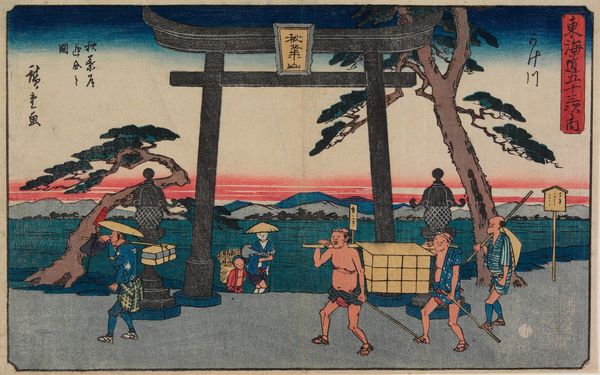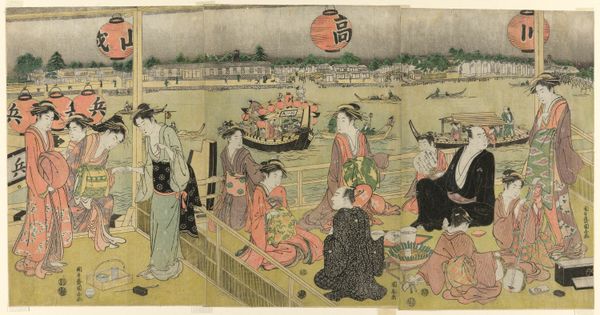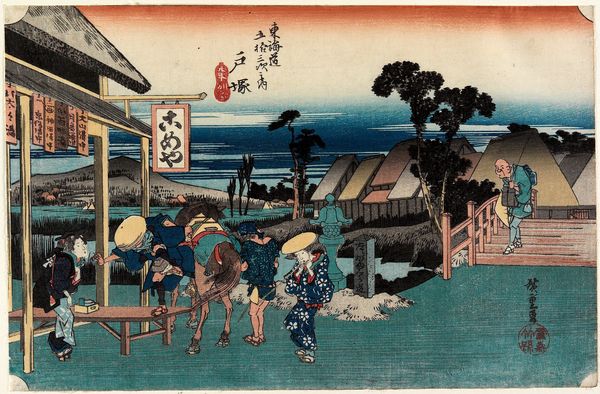
print, ink, woodblock-print
# print
#
asian-art
#
landscape
#
ukiyo-e
#
ink
#
woodblock-print
#
cityscape
Dimensions: 9 5/8 × 14 1/2 in. (24.4 × 36.8 cm) (sheet, horizontal ōban)
Copyright: Public Domain
Utagawa Hiroshige's "Nihonbashi" is a woodblock print, likely created in the 1830s, depicting a bustling scene at the Nihonbashi bridge in Edo, now Tokyo. This print captures the vibrant commercial life of Edo, the heart of Japan's political and economic power during the Edo period. We see a snapshot of everyday life: laborers carrying goods, merchants haggling, and travelers passing through. The bridge itself was not just a physical structure but a symbolic one. It marked the starting point of the Tokaido Road, the most important highway in Japan, connecting Edo with Kyoto, the imperial capital. Hiroshige's work is deeply embedded in the cultural and economic context of the time. The rise of a merchant class, the growth of urban centers, and the increasing mobility of people all contributed to a thriving popular culture, which woodblock prints like this one both reflected and shaped. To fully understand the historical significance of "Nihonbashi," we can turn to period maps, travel guides, and merchant records. These sources help us to decode the rich layers of meaning embedded within the image.
Comments
No comments
Be the first to comment and join the conversation on the ultimate creative platform.
